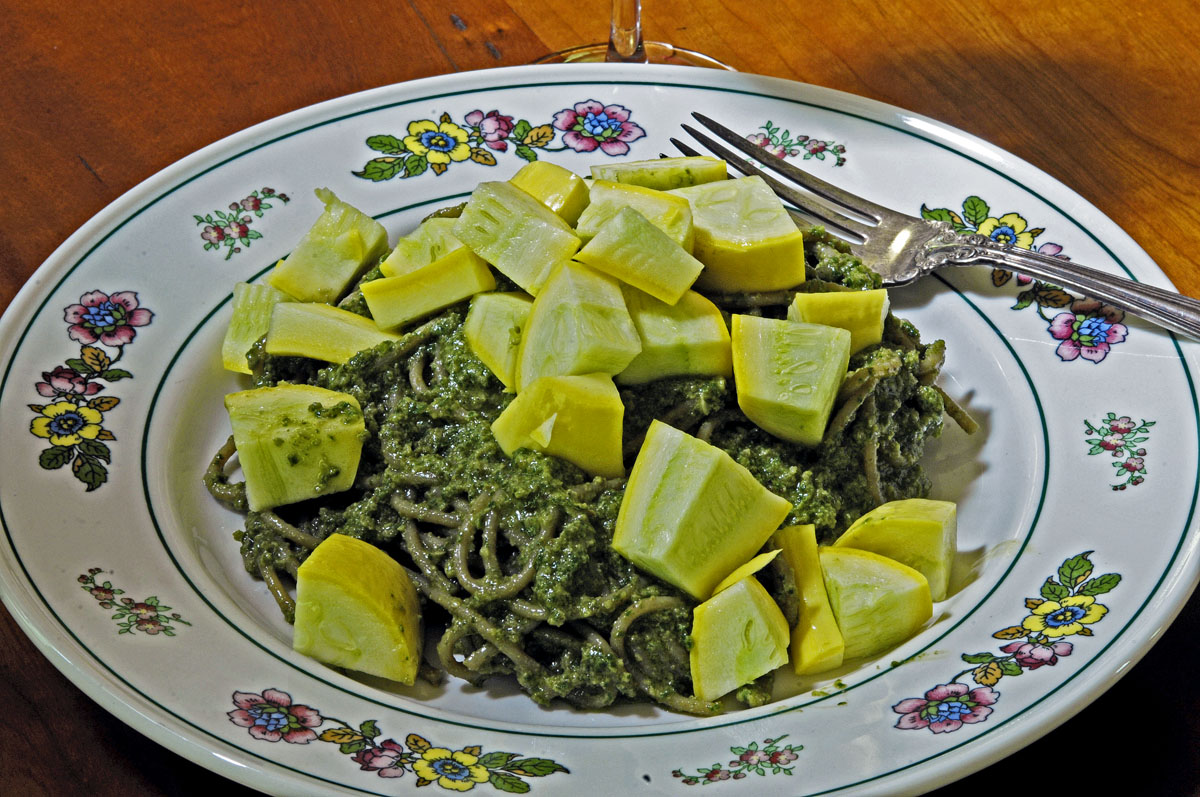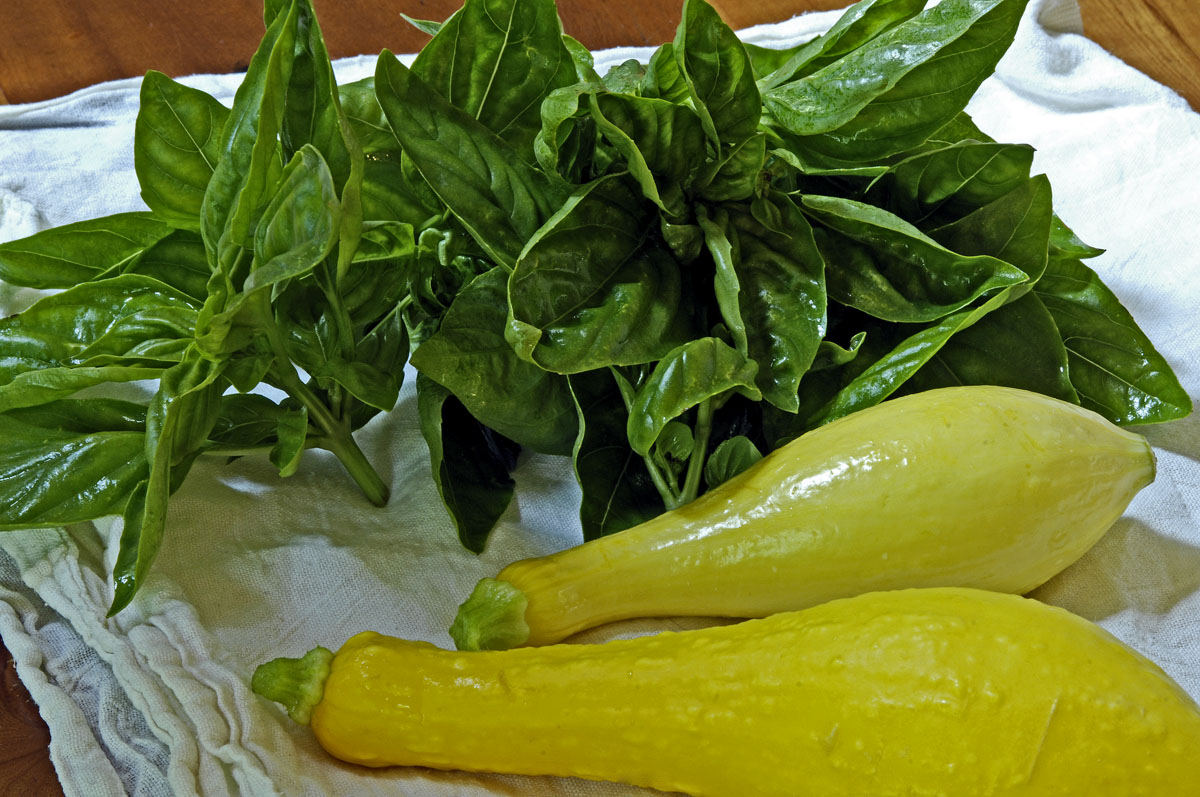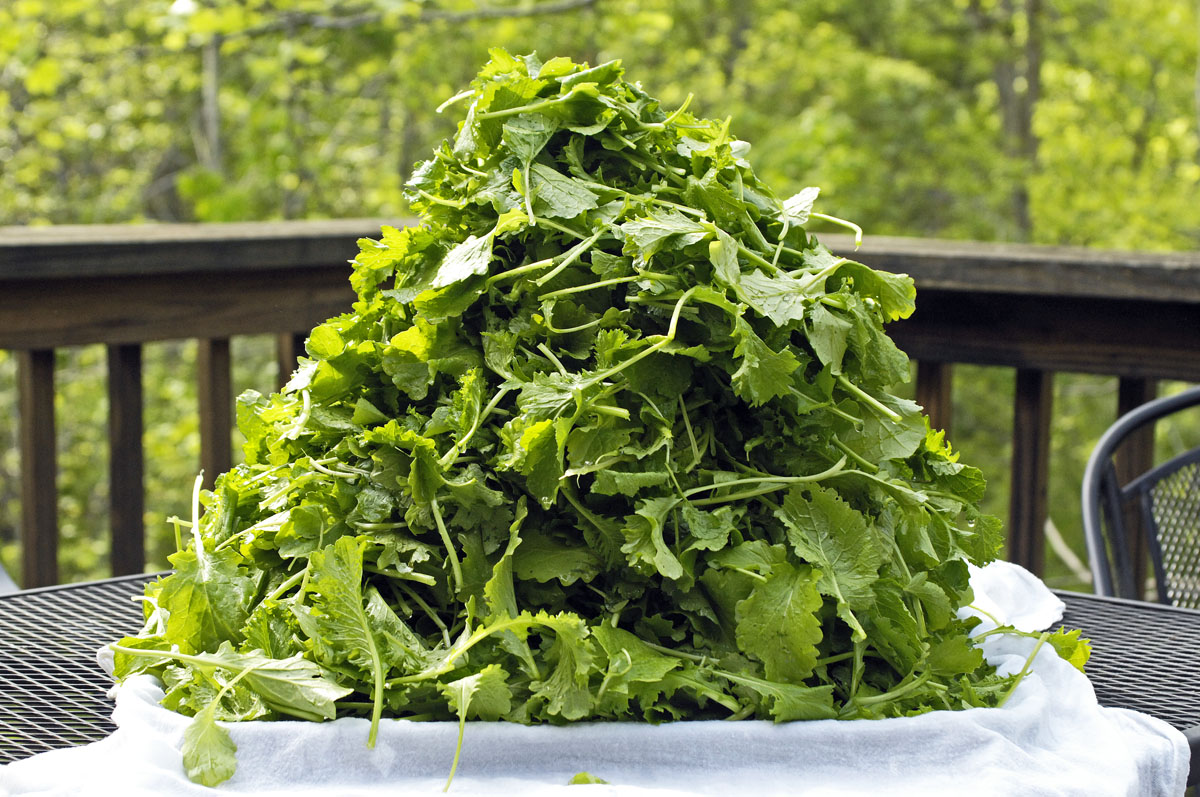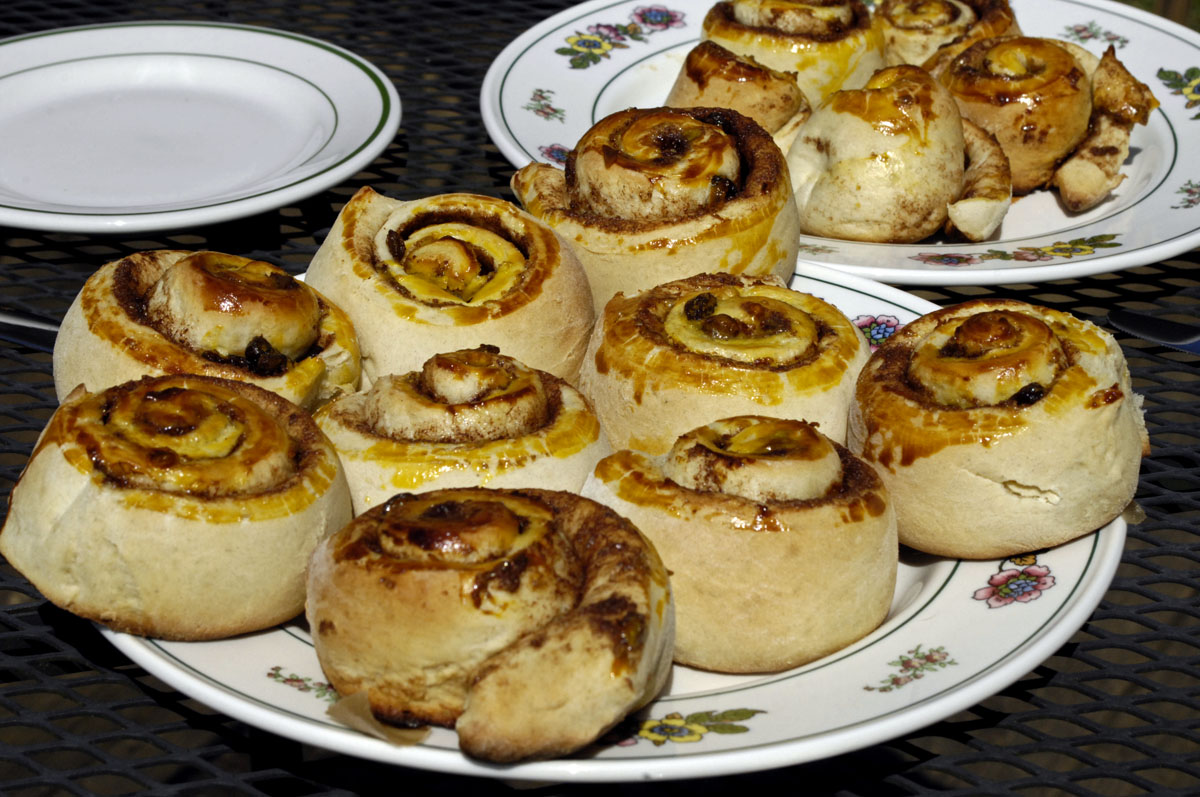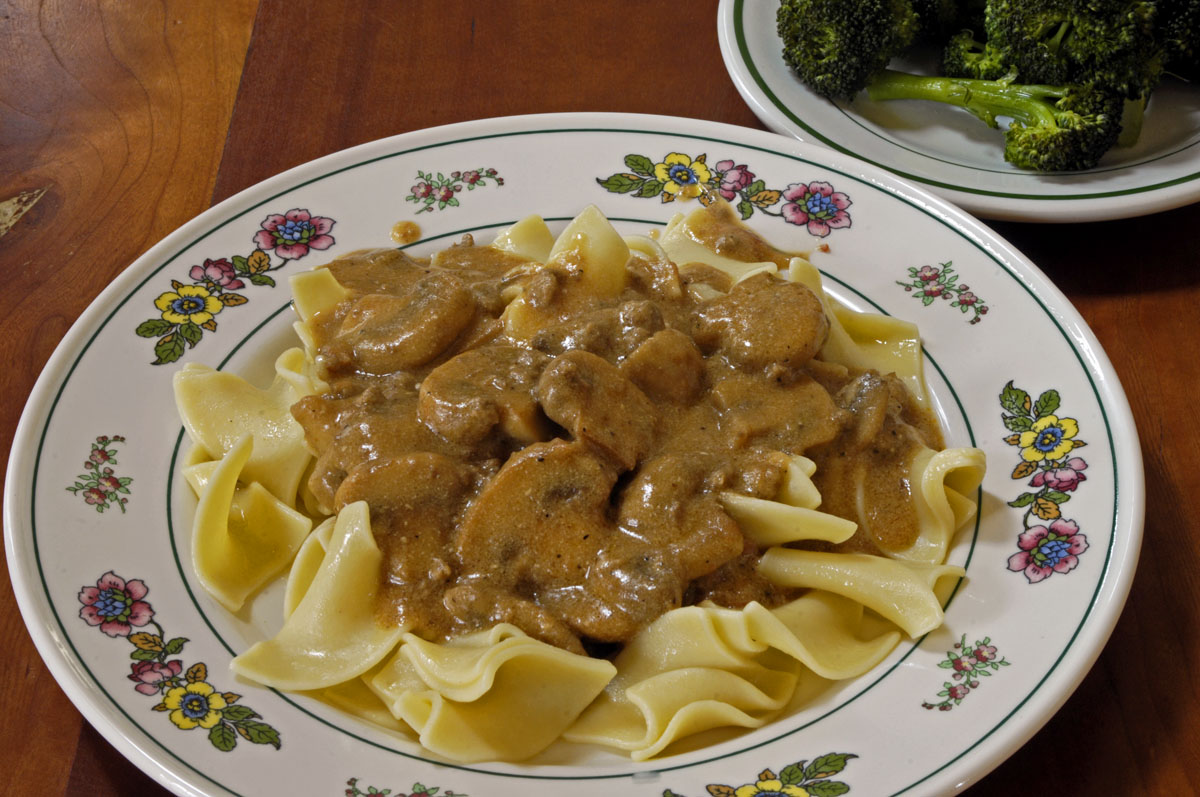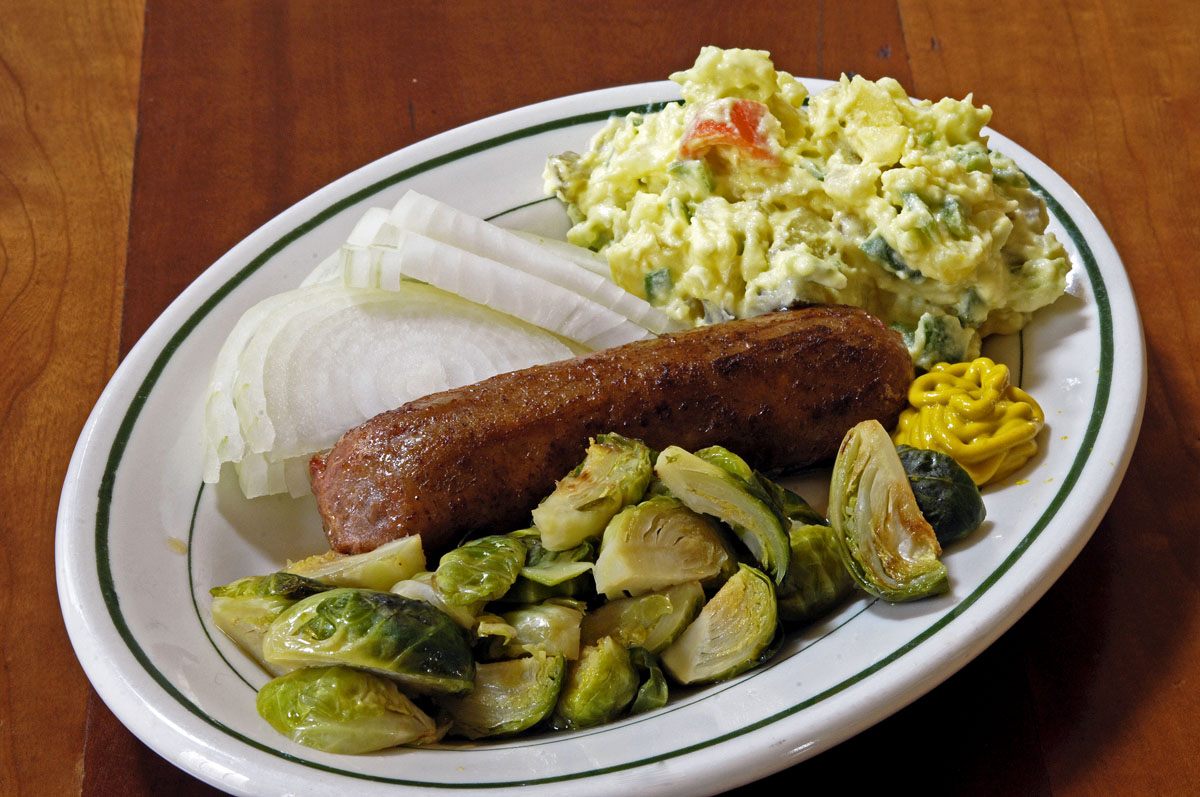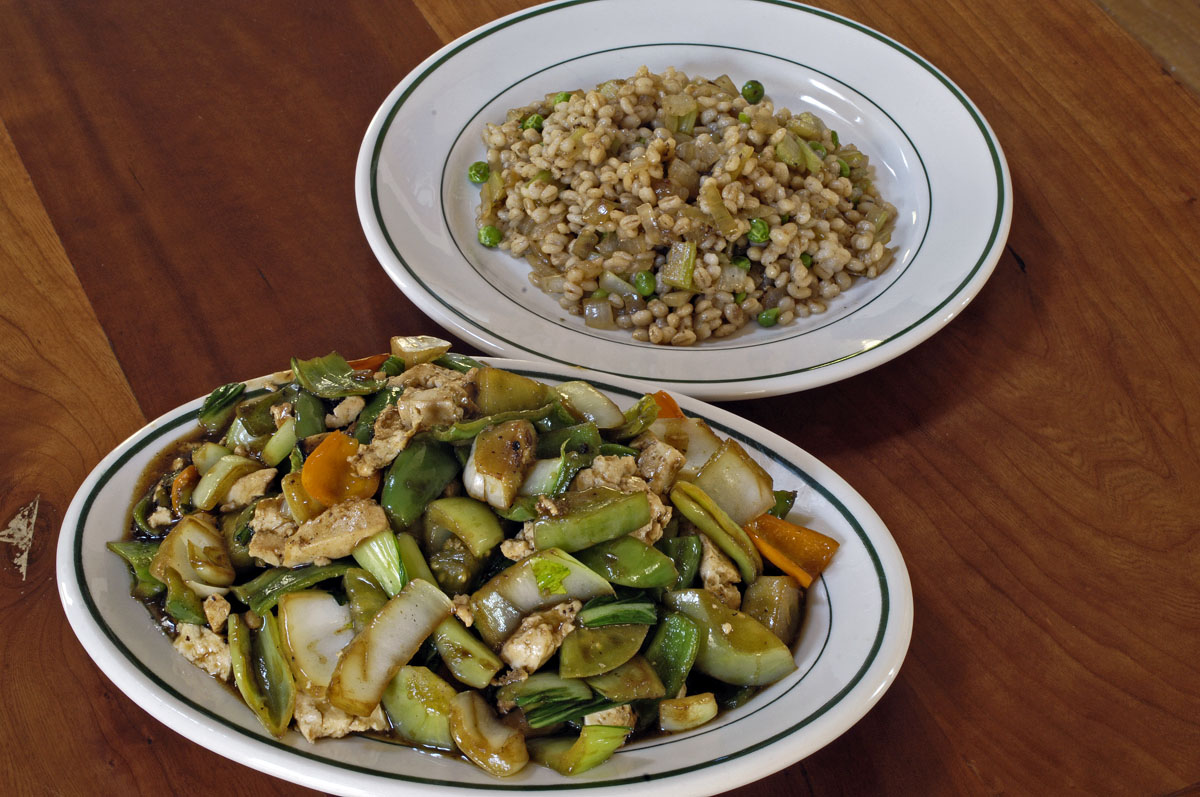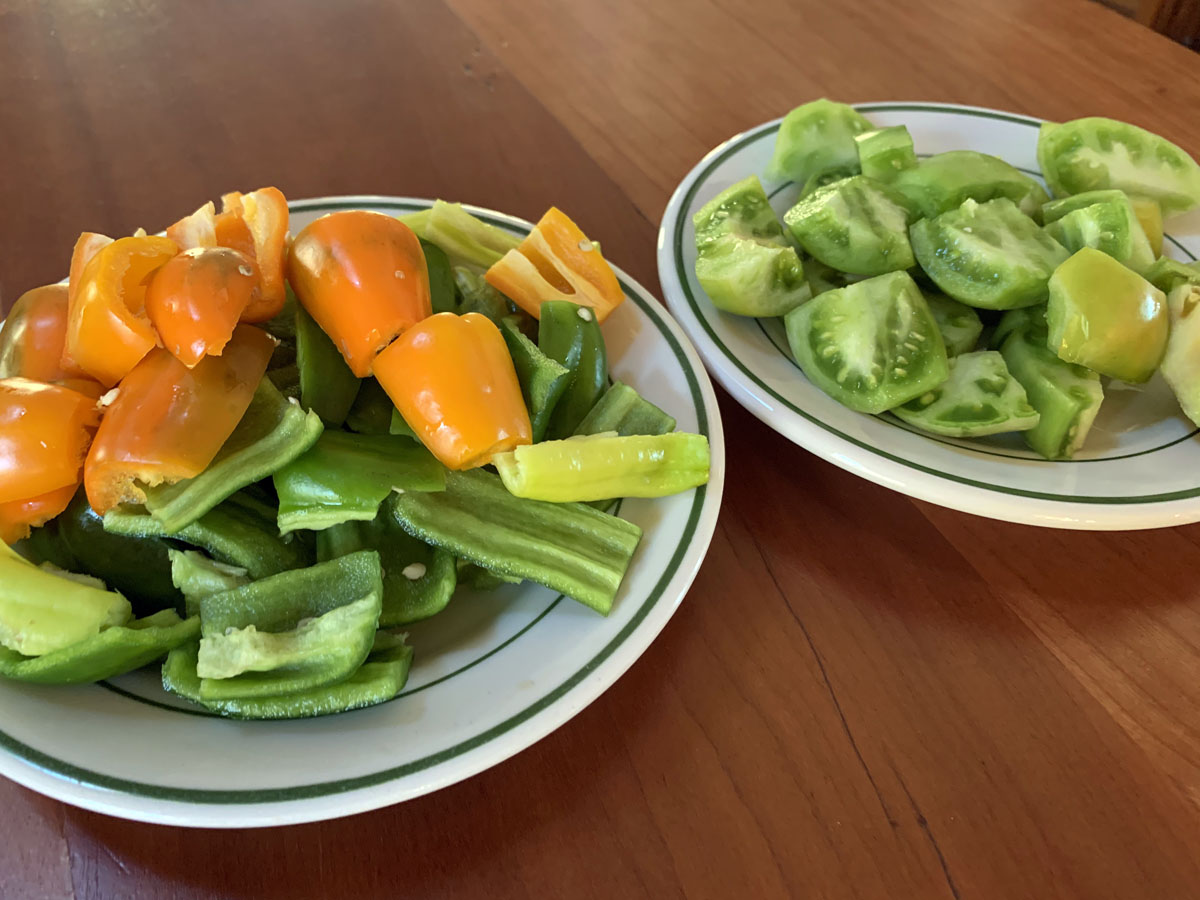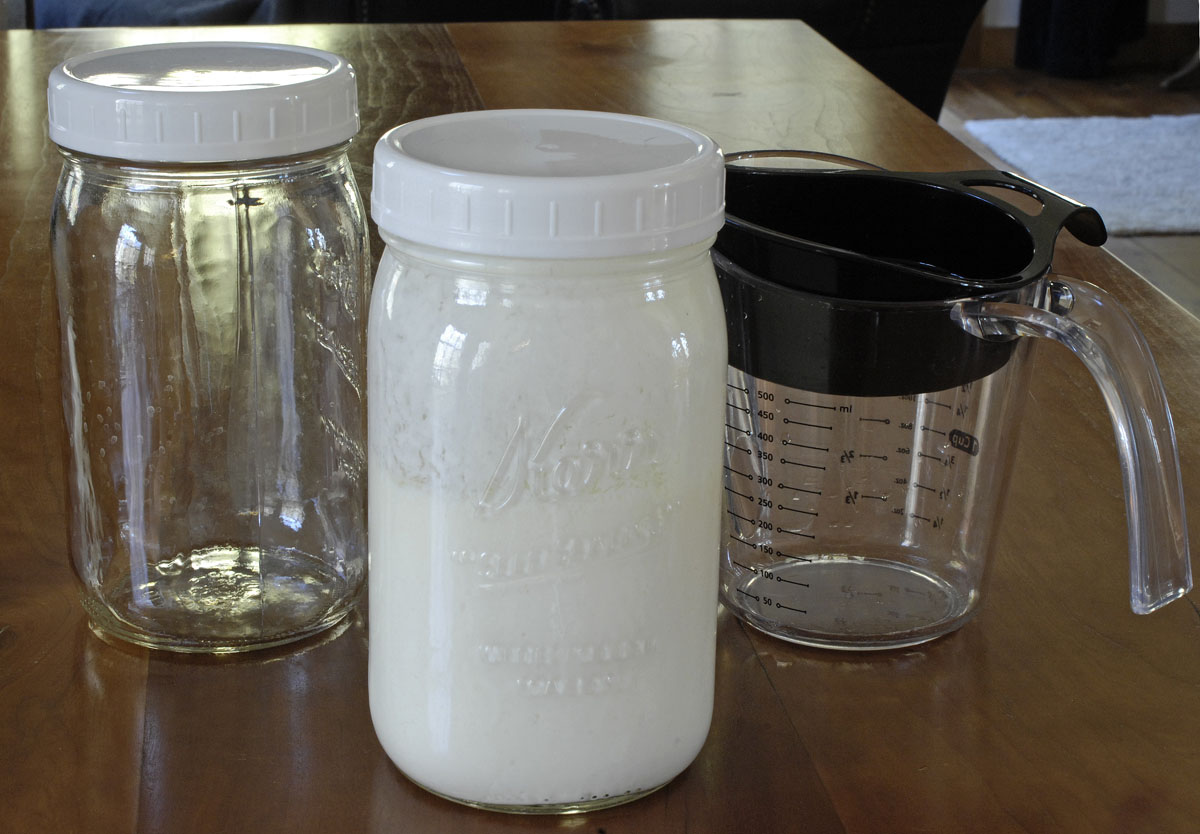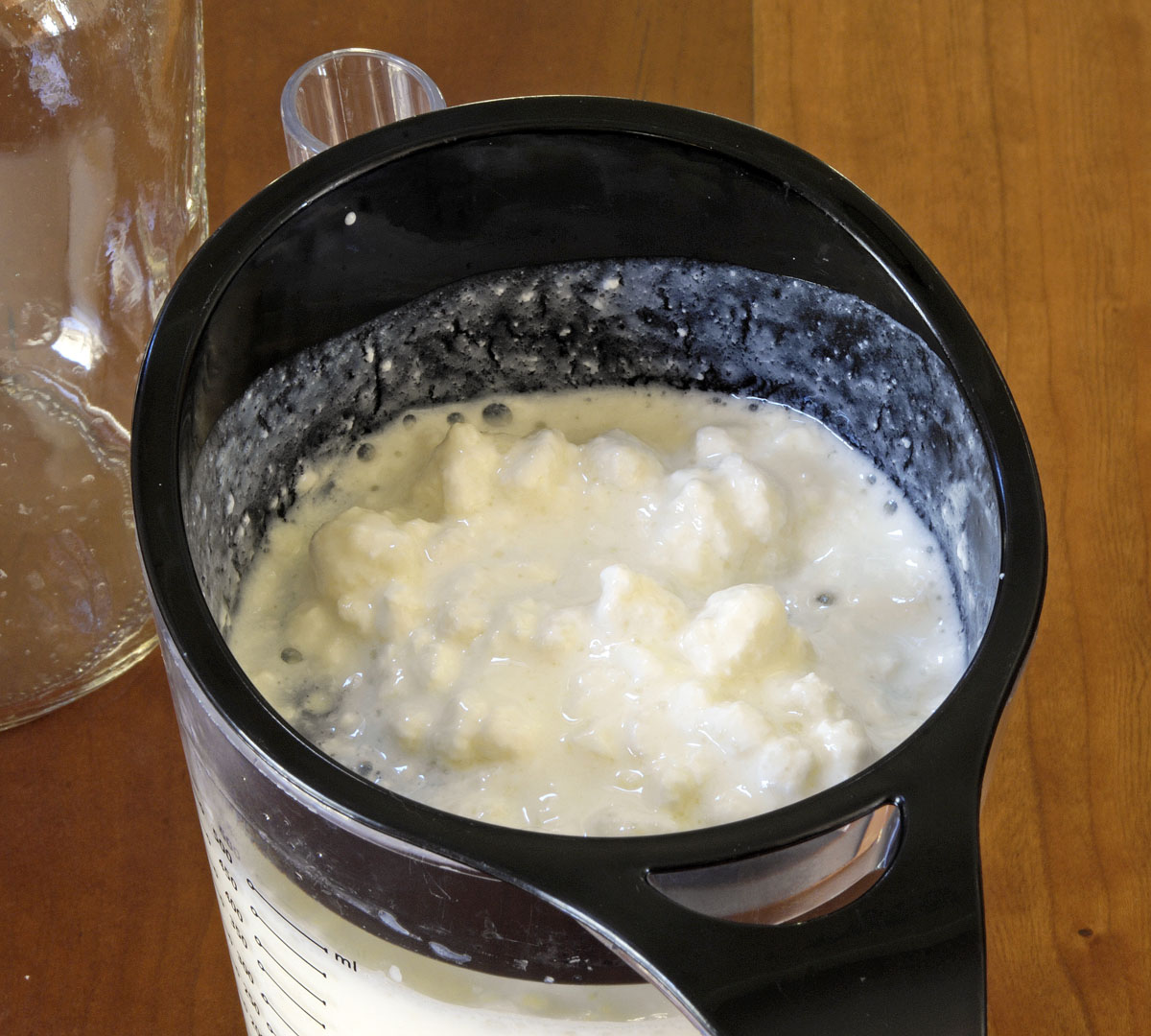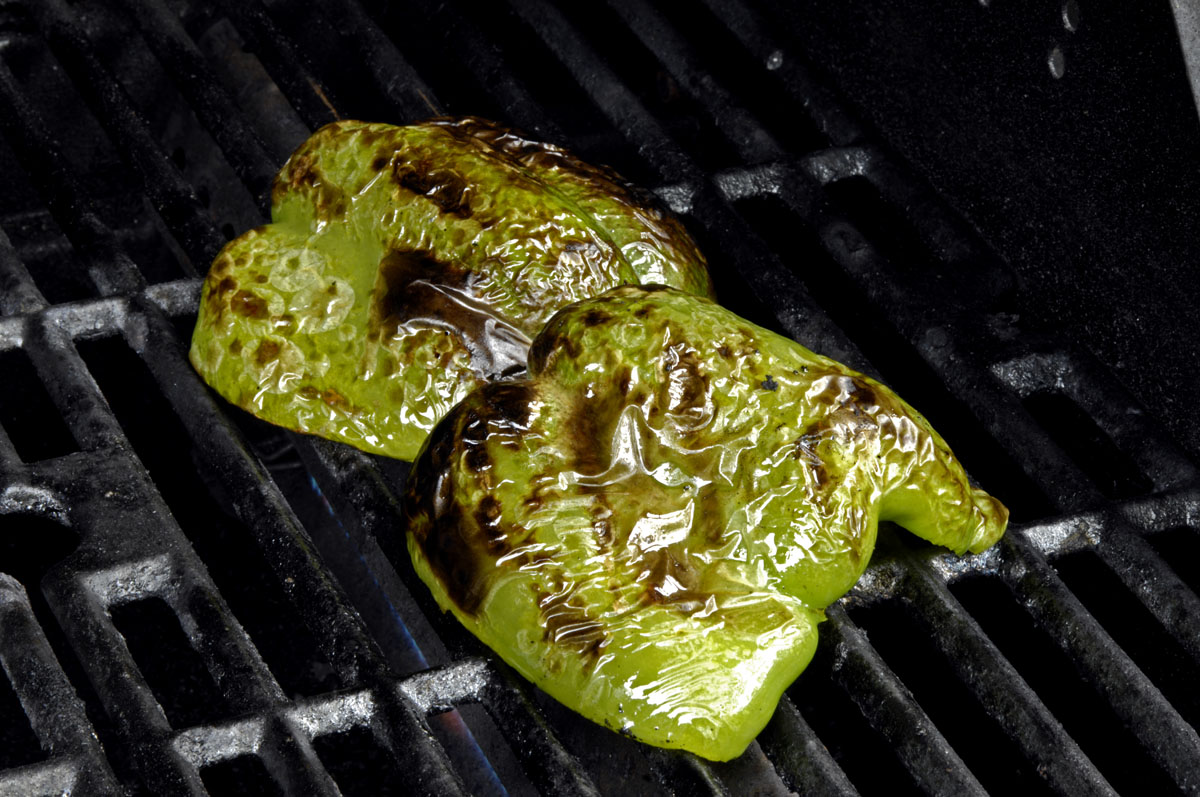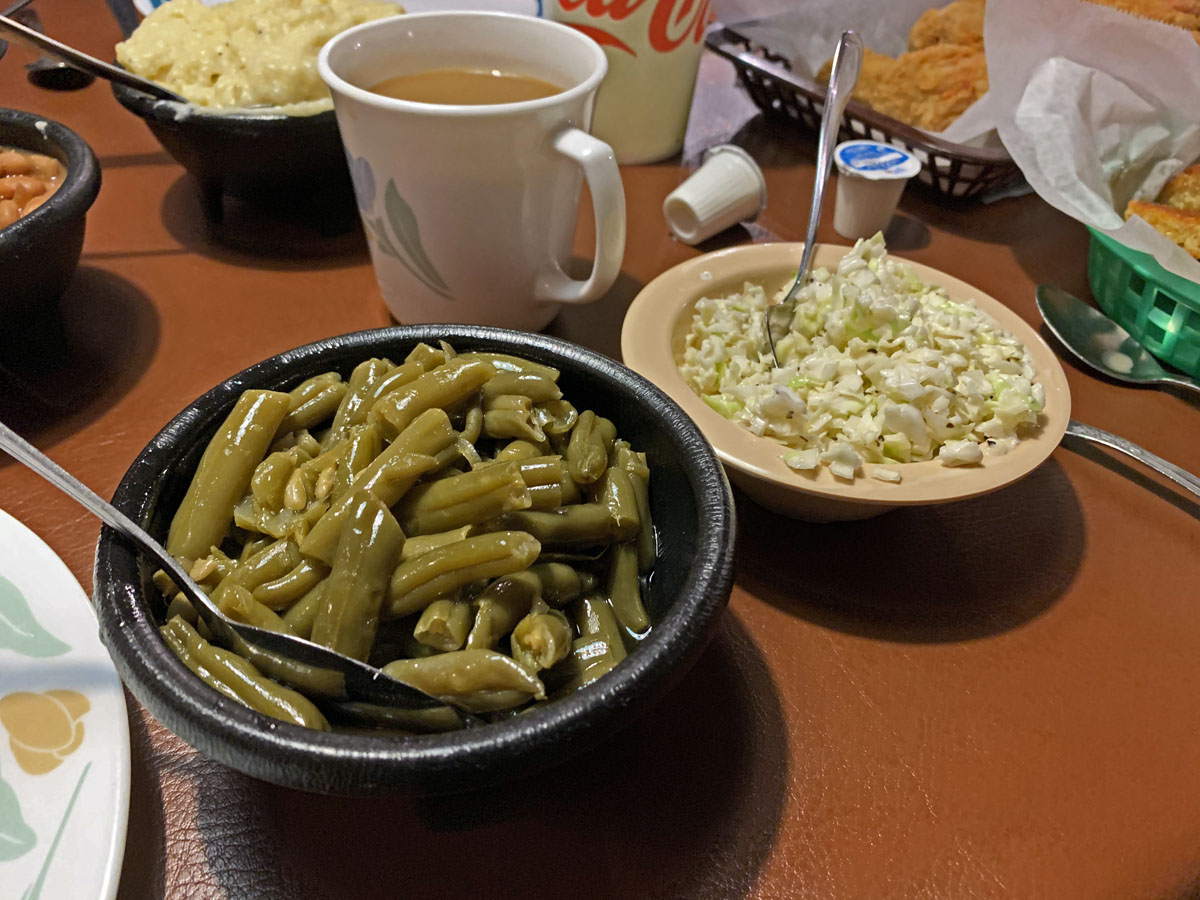
Hillbilly Hideway. See below for more.
It’s true everywhere, but here in the American South, our cuisine is (or was) an essential part of our culture and identity. Passing that culture and identity from generation to generation is very important work. But — at least here in the American South — that work is breaking down.
For decades, all-you-can-eat places serving traditional Southern cuisine, served family style, have been a meaningful (if smallish) niche in the eating-out ecology. I remember, as a child, on road trips into the Appalachian Highlands, stopping for supper at the Dan’l Boone Inn at Boone. It’s still there! And it’s still doing it, at $19.95 per person. River Forest Manor, at Belhaven on the North Carolina coast, used to serve family-style meals, but they’ve now gone to a different model that emphasizes the big house, for weddings and such, rather than the food. I could name other places, long gone. Back in the 1960s, there even were places that served all-you-can-eat seafood, including shrimp and oysters, on Fridays.
Here in the middle of nowhere, in Stokes County, North Carolina, we still have Hillbilly Hideaway. It seems they haven’t updated the prices on their web site, but lunch and dinner are now $20 per person.
A few times a year, I have Sunday breakfast with my Republican friends (no kidding!) Jess and Kitty. Here in the middle of nowhere, there aren’t many places to go, so sometimes we go to the Hillbilly Hideaway, which, even though it’s in the same county, is nevertheless 17 miles away. Hillbilly Hideway doesn’t do Sunday breakfast anymore, but they start lunch at 11 o’clock on Sundays, before the church crowd. However, there doesn’t seem to be a church crowd on Sundays at Hillbilly Hideway anymore. Jess, Kitty, and I lingered until almost 1 p.m. last Sunday, but only a few tables were occupied, and the place was quiet. Jess, Kitty and I figure that the high cost of all-you-can-eat these days — $20 — is just too high for a poor county like this. Plus I’m starting to wonder if younger people even care about traditional cooking anymore.
For people my age, traditional Southern home cooking is what we grew up on. The standard for any particular individual might have been a mother, a grandmother, or a favorite aunt. But we all idealized it. It’s what people here still do on holidays, insofar as they remember how.
But the younger generations, I now realize, know far, far less about home cooking. They may not even like it, because they’ve grown up on fast food, frozen food, and home cooking that can be put together in 30 minutes or less. Too many vegetables! It’s related, I think, to why even many country people with lots of land don’t bother with gardens anymore. They don’t like that stuff.
I’m sure there are plenty of people who can get their money’s worth at a $20 all-you-can-eat meal. Jess, Kitty, and I are not among them. I wish Hillbilly Hideaway all the best. I hope they can adapt to changing times.
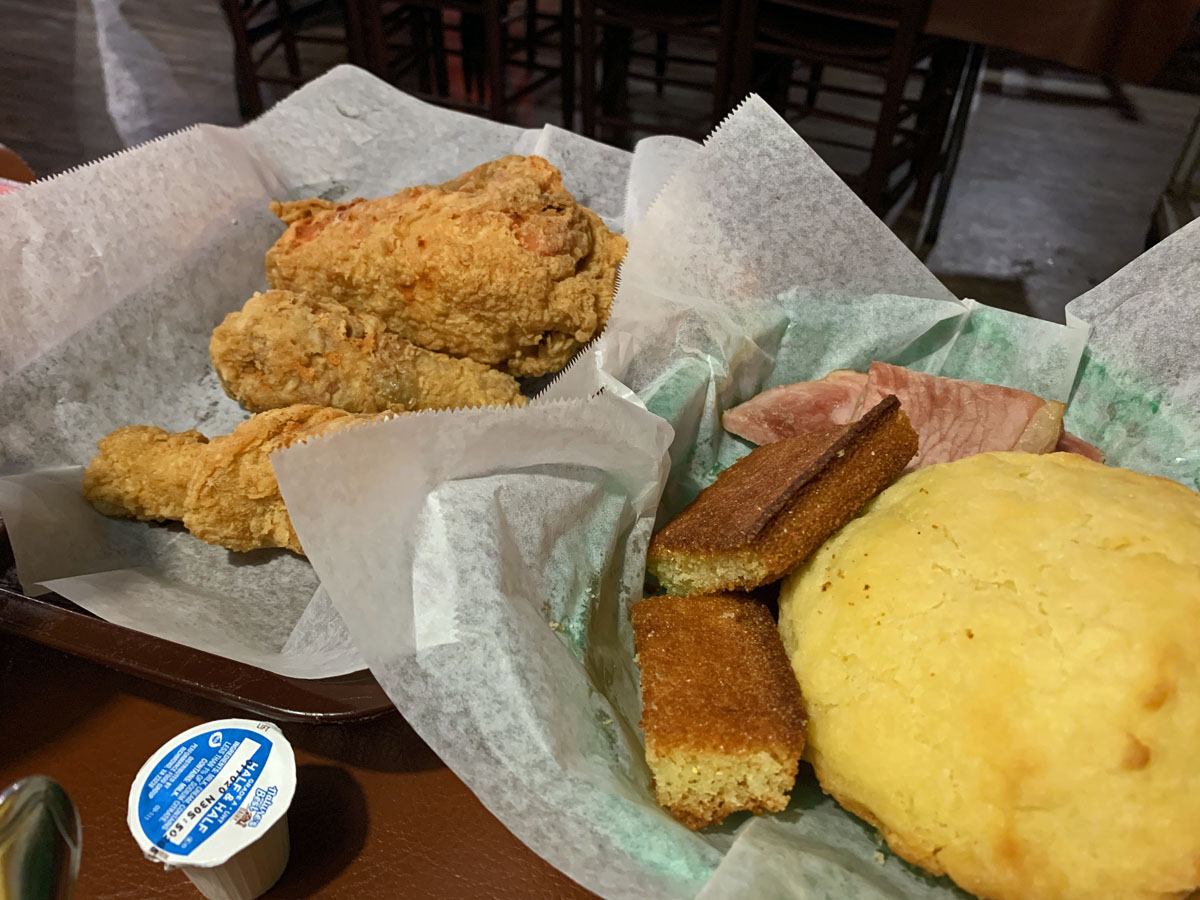
Fried chicken, ham, hoe cake, and cornbread.
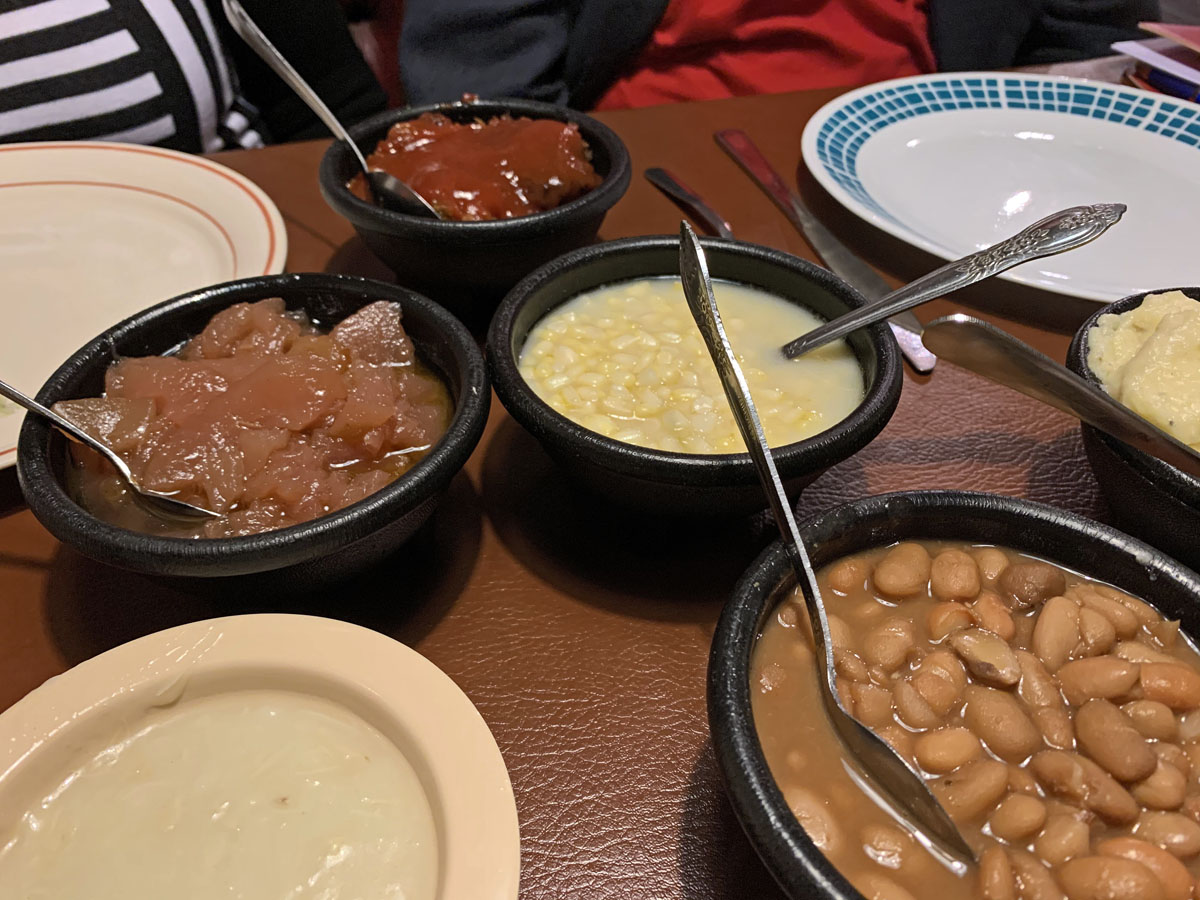
Hillbilly Hideaway vegetables
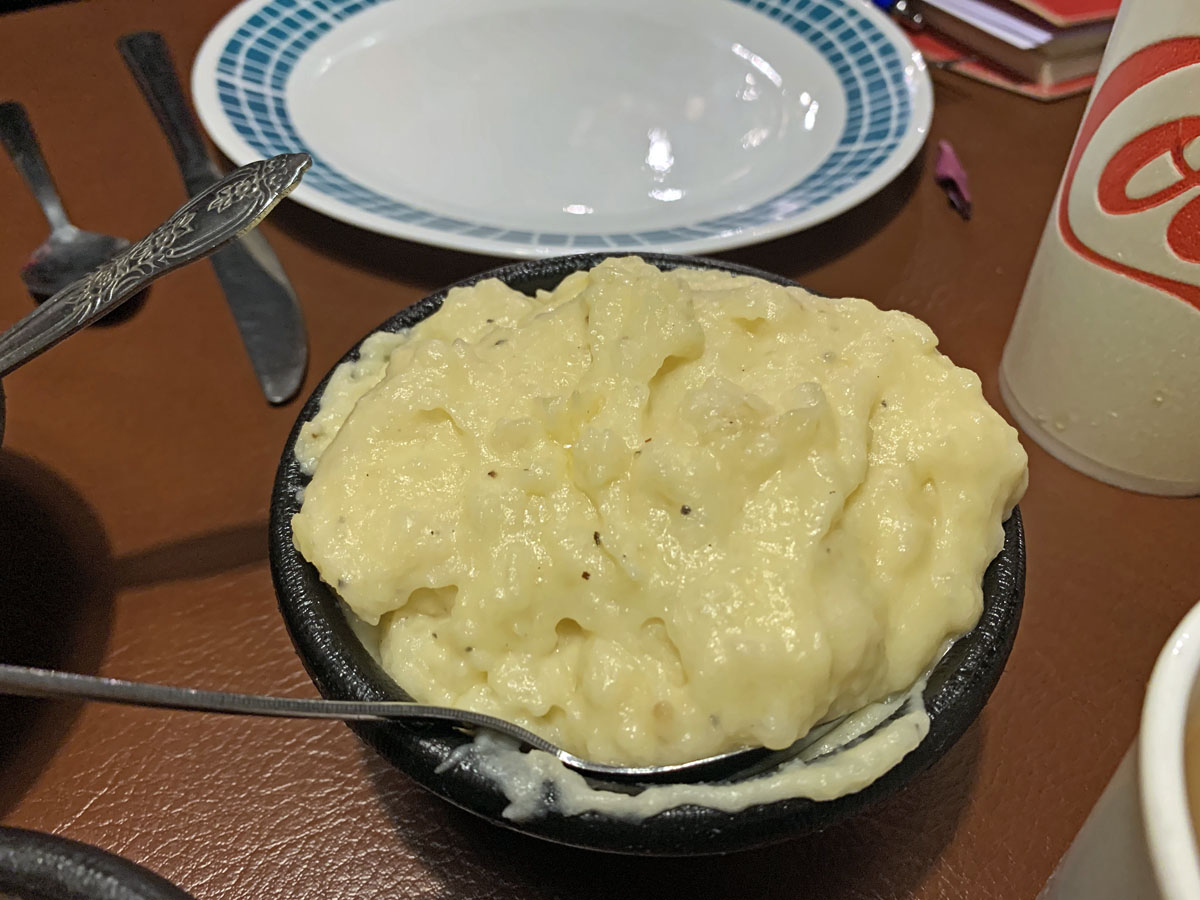
Potatoes
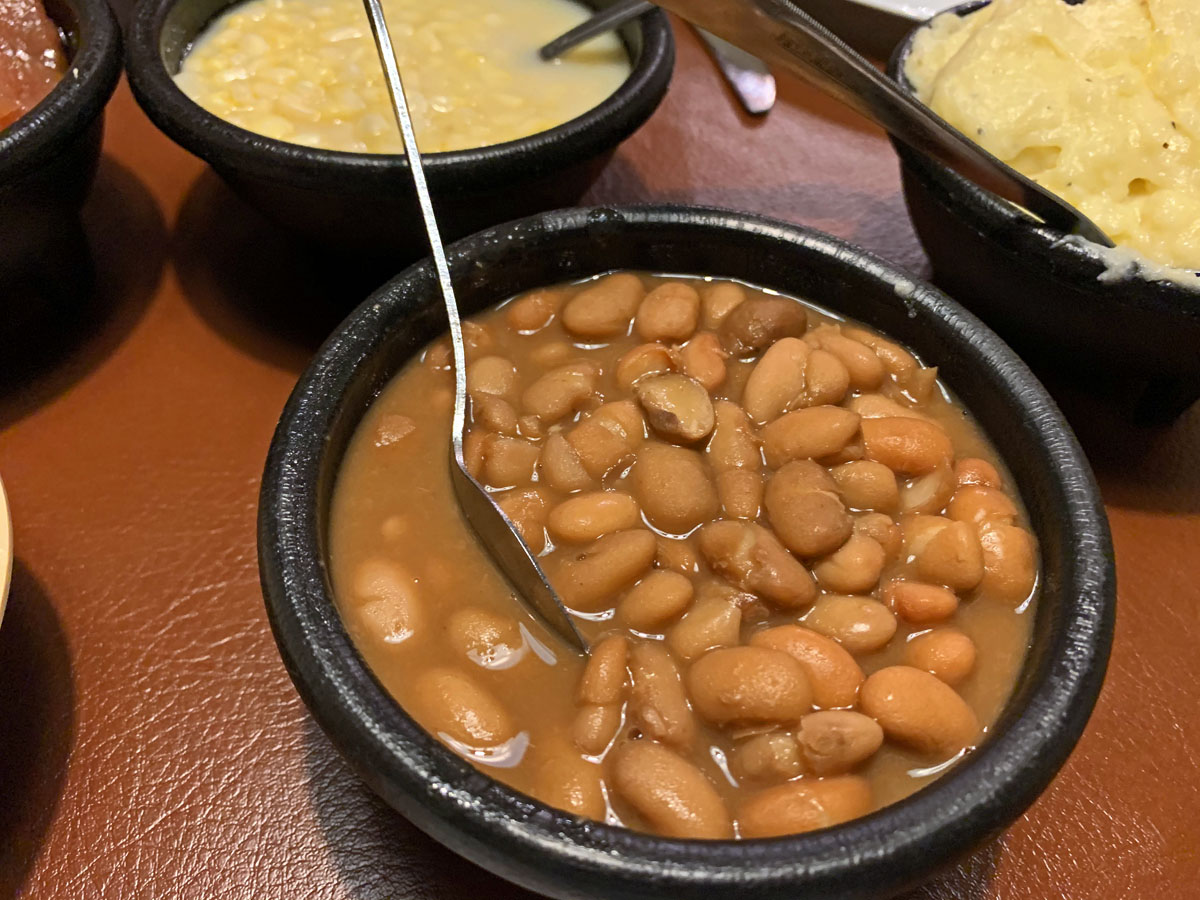
Pinto beans
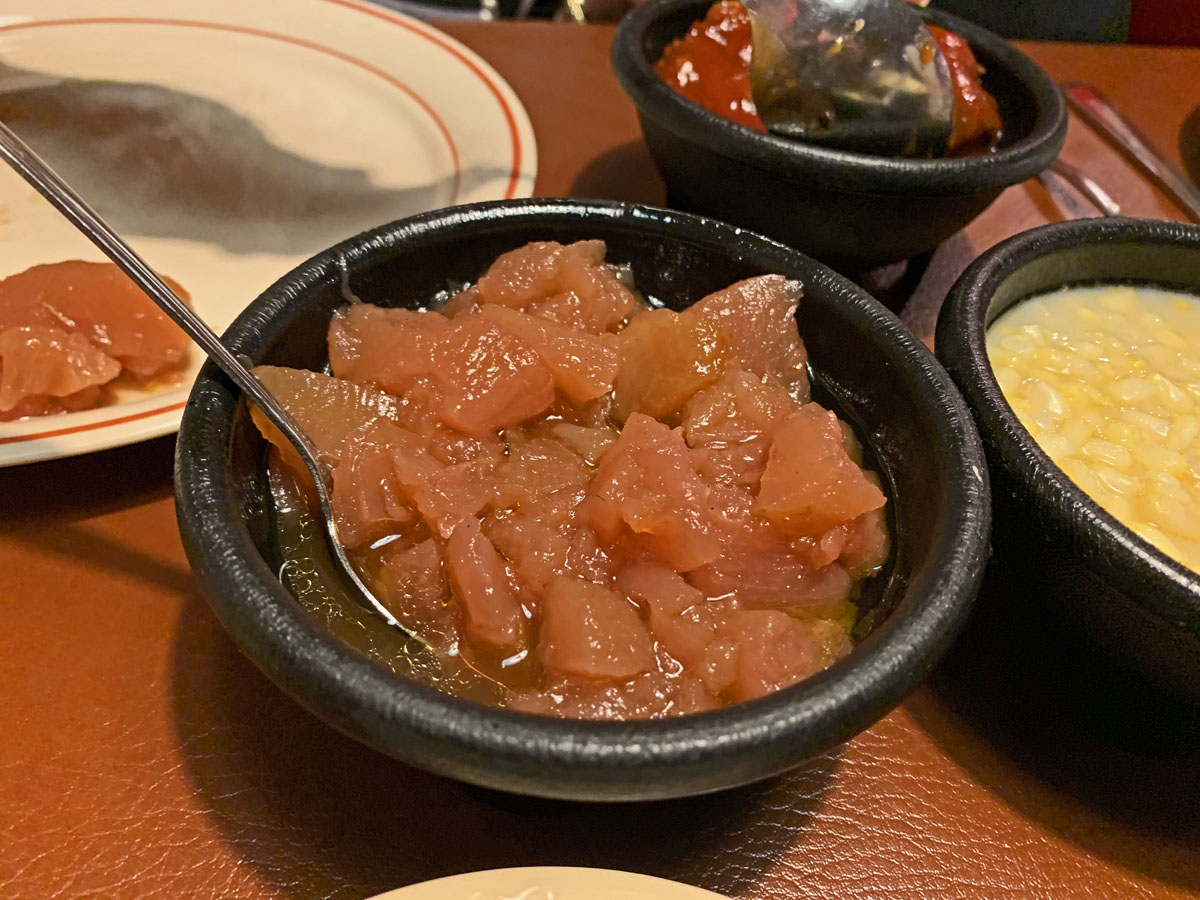
Stewed apples

The dessert cart, extra cost
Update: Ten years ago, Huntington, West Virginia, was identified as the most obese city in the nation. Today, Politico reports on how citizen activists improved on that. For fun, nine years ago, Jamie Oliver went to Huntington and found that most children cannot identify basic vegetables.
